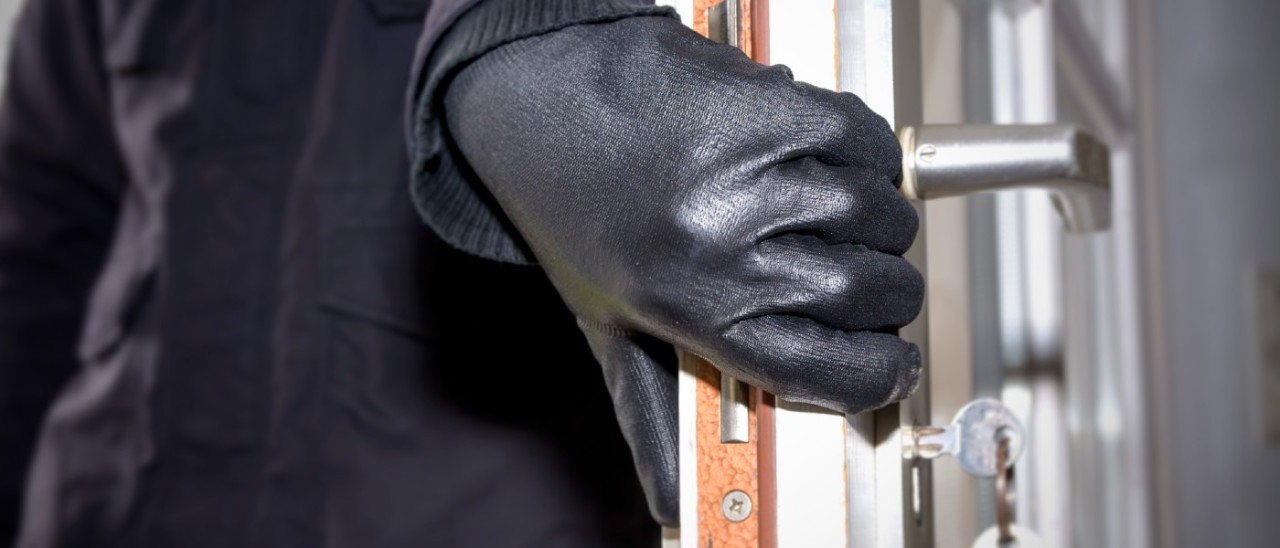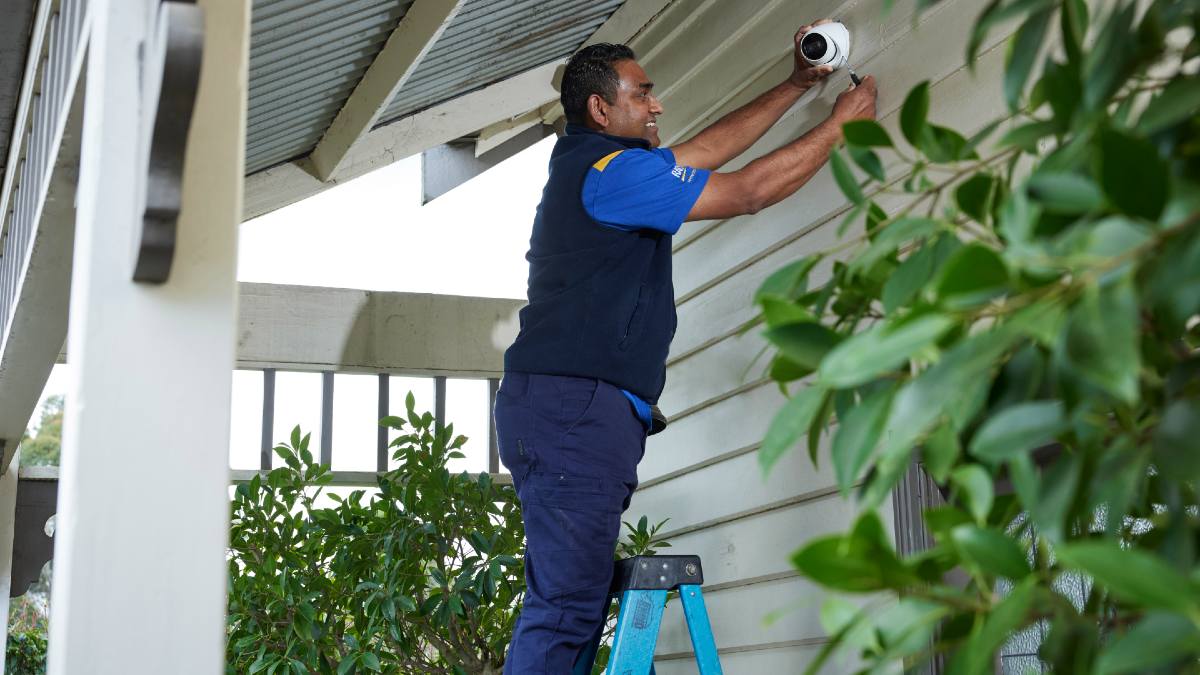If your home has been broken into, you may be feeling anxious and confused about what to do. Here are some guidelines for what to do after a burglary.
Burglary hotspots in Melbourne and Victoria revealed

New crime statistics reveal the worst local government areas and worst suburbs for home burglaries and theft in Melbourne and Victoria.
The Crime Statistics Agency (CSA) reported 30,545 residential burglaries in Victoria for the year to 30 June 2025, which is up almost 14 per cent on the previous year. The figure frames a reality homeowners already sense: vigilance matters, especially for burglary prevention.
Neighbourhood Watch Victoria CEO Bambi Gordon says there are steps homeowners can take to help prevent robberies and keep their belongings safe.
"The frustrating fact is that we need to do better at protecting our properties - a home is burgled in Victoria every 20 minutes and a third of those burglaries are opportunistic and don't even require forced entry," Gordon says.
It's also important to review your home and contents insurance policy to make sure you're adequately covered.
"Home and contents insurance is particularly important considering rising numbers of residential burglaries," says RACV General Manager Insurance Bill Bloodworth.
"You may be able to replace stolen items and damaged property from a break-in by claiming on your policy. RACV Home and Contents Insurance provides cover for theft even when you forget to lock your door."
In this article
Victorian burglary data revealed
Worst burglary hotspots in Melbourne and Victoria
Victoria's worst home burglary hotspot was the local government area (LGA) of Stonnington, which experienced 932.1 burglaries per 100,000 population in the year ending June 2025. Stonnington LGA includes the suburbs of Armadale, Kooyong, Malvern, Malvern East, Prahran and Toorak, plus parts of Glen Iris, South Yarra and Windsor.
The second worst burglary hotspot in Victoria was the Yarra LGA, which covers Abbotsford, Alphington, Burnley, Carlton North, Clifton Hill, Collingwood, Cremorne, Fairfield, Fitzroy, Fitzroy North, Princes Hill and Richmond. These suburbs collectively suffered 759.9 burglaries per 100,000 population.
Other Victorian LGAs with high burglary offences included Port Phillip, Darebin, Maribyrnong, Mildura, Melbourne, Latrobe, Boroondara and Bayside.
Aggravated burglary on the rise in Melbourne and Victoria
Burglary is defined as entering a building without permission in order to steal something or damage property. Aggravated burglary means the offender possesses a weapon, or knows someone else is present in the building at the time of entry.
Crime Stoppers Victoria reports that aggravated burglary in Victoria has reached a record high, rising by 26.8 per cent in the past year.
According to Crime Statistics Victoria data for the year ending June 2025, the LGAs of Bayside, Stonnington, Boroondara, Mildura and Latrobe had the highest rates of residential aggravated burglaries per 100,000 population.
"Your safety is always the number one priority," Gordon says. "If someone breaks in while you're home, stay calm, avoid any confrontation and get yourself to safety. If possible, quietly leave the house and call 000, or lock yourself in a room and make the call from there. Never try to stop or chase the intruder - property can be replaced, but people can't."
| Top 10 LGAs | ||
|---|---|---|
|
1. Stonnington |
932.1 |
+25% |
|
2. Yarra |
759.9 |
+14% |
|
3. Port Phillip |
693.0 |
+16% |
|
4. Darebin |
654.5 |
+47% |
|
5. Maribyrnong |
626.4 |
+26% |
|
6. Mildura |
6.12.6 |
-8% |
|
7. Melbourne |
598.7 |
+16% |
|
8. Latrobe |
596.7 |
-8% |
|
9. Boroondara |
590.3 |
+36% |
|
10. Bayside |
567.7 |
+34% |
Source: Crime Statistics Agency: residential aggravated and non-aggravated burglary offences in Victoria, year ending June 2025.

Installing security systems can be a deterrent for would-be burglars.
Why are some Melbourne suburbs hotspots for burglary?
Burglary hotspots are usually suburbs with high population, density and accessibility.
High-population suburbs naturally have more houses, apartments and businesses. With more dwellings and higher population density, there are simply more opportunities for burglary.
Suburbs with a lot of rental housing, student accommodation or short-term residents also tend to record more break-ins. Frequent turnover can make neighbourhoods feel less connected, reducing the deterrent effect of neighbours watching out for each other.
Burglars tend to target suburbs with easy entry and exit points, close to major roads, public transport, or city centres. Suburbs that sit near key transport corridors are easier for offenders to access and leave quickly.
"Suburbs with easy access to major roads or train lines can also become hotspots because offenders know they can get in and out quickly," Gordon says. "Once an area develops a reputation as 'easy pickings', it can unfortunately draw repeat offending."
In contrast, the safest suburbs tend to be smaller, more remote and more tightly knit communities where opportunities for burglary are limited. They are often areas with long-term home ownership, which results in better informal surveillance between neighbours.
Why do burglary hotspots change each year?
Burglary risk is dynamic. Police crackdowns can temporarily displace burglary efforts from some suburbs. Burglars may be attracted to new housing estates, or copy-cat routes if they see successful break-ins in certain areas. Economic pressures also shift what offenders aim to steal, which can influence their target areas.
How to help deter burglars
When it comes to crime prevention, Gordon says many people underestimate how simple mitigation techniques can have an enormous impact.
"Ultimately, burglars fear being caught and they’re lazy - but if we make things easy for them, they will take advantage," she says. "Keeping valuables out of sight may seem like an obvious piece of advice, but many of us will ignore the risks of leaving keys, wallets and bags in plain sight inside a car or by the front door."
The combination of simple habit changes and modest physical upgrades can push a would-be burglar to pick an easier target.
- Visibility and noise - trim hedges below windowsill height, add motion lighting, and use gravel or surfaces that make footfall obvious. Offenders dislike exposure and attention.
- Locks matter more than you think - fit quality deadlocks on external doors and keyed locks or pin-locks on windows. Keep your garage door closed and locked, and never leave the manual release cord accessible from outside.
- Create key discipline - store car keys away from entry paths and windows. When you are home, lock the door behind you.
- Alarm and cameras as multipliers - a basic monitored alarm or CCTV set is often enough to deter would-be burglars. Ensure that warning signage is visible too.
- Neighbourhood help - make the house look lived in during holidays with timers for lights, paused mail, and a friend to move bins and shuffle parked cars.
Act now on the easy wins (locks, lighting, key discipline, garage security) before you think about higher-cost upgrades. Maintain good habits; complacency is what burglars count on.
How safe is your place?
Gordon calls for Victorians to come together and use the strength of community networking to make their homes and property safer.
"Joining or starting a Neighbourhood Watch group in your local area is not only a fantastic way to meet and connect with your neighbours, but also the best crime-prevention tool in your arsenal," Gordon says.
Neighbourhood Watch also encourages Victorians to use How Safe is My Place: an online platform to help homeowners identify and fix vulnerabilities in their property.
The information provided is general advice only. Before making any decisions please consider your own circumstances and the Product Disclosure Statement and Target Market Determinations. For copies, visit racv.com.au. As distributor, RACV Insurance Services Pty Ltd AFS Licence No. 230039 receives commission for each policy sold or renewed. Product(s) issued by Insurance Manufacturers of Australia Pty Ltd ABN 93 004 208 084 AFS Licence No. 227678.


